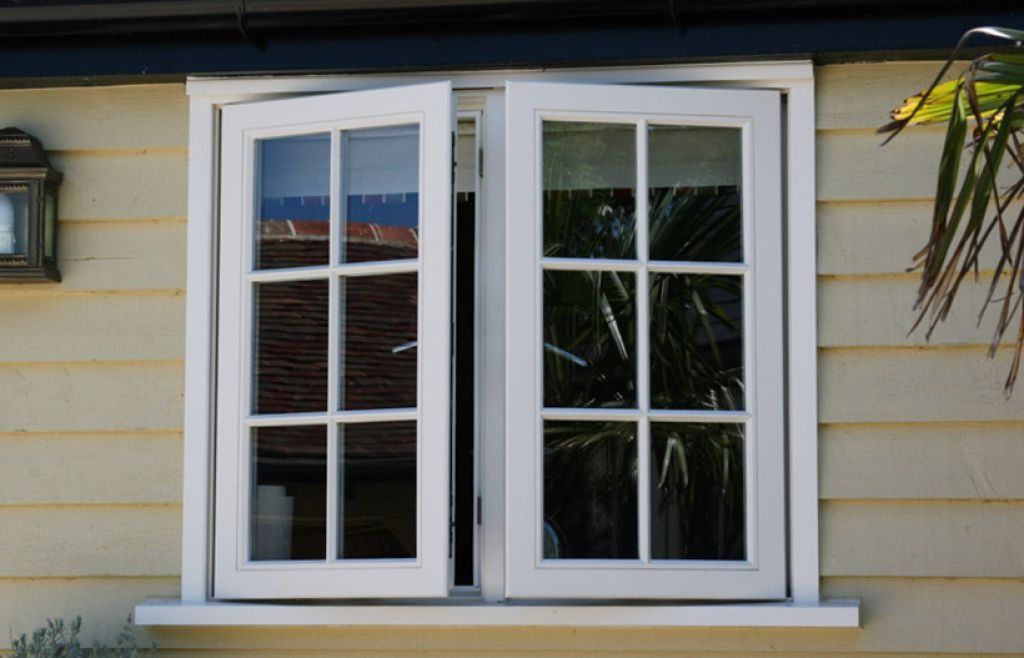When it comes to window installation, there are various styles and designs to choose from, making the decision-making process quite challenging. Two popular window styles that homeowners often consider are casement and double-hung windows. While both options have their advantages and disadvantages, the right choice for your home will depend on various factors, such as aesthetics, functionality, energy efficiency, and budget. In this article, we’ll compare casement and double-hung windows to help you determine which is best for your installation.
Casement Windows
Casement windows are hinged at the side and open outwards, either to the left or right, using a crank or lever. This window style offers excellent ventilation and unobstructed views, making it an attractive option for many homeowners.
Advantages of Casement Windows
- Superior Ventilation: Casement windows can be opened fully, allowing maximum airflow into your home. This makes them an ideal choice for rooms that require good ventilation, such as kitchens and bathrooms.
- Energy Efficiency: Casement windows provide a tight seal when closed due to their design, which minimizes air leakage. This results in better energy efficiency and reduced heating and cooling costs 1.
- Unobstructed Views: With no horizontal sash dividing the window, casement windows offer clear, expansive views of the outdoors.
- Ease of Operation: The crank or lever mechanism on casement windows makes them easy to open and close, even in hard-to-reach areas.
Disadvantages of Casement Windows
- Size Limitations: Due to their outward-opening design, casement windows have size limitations and may not be suitable for large openings.
- Higher Cost: Casement windows tend to be more expensive than double-hung windows, making them a less budget-friendly option.
- Exterior Space Requirements: Since casement windows open outwards, they require enough exterior space to accommodate their full range of motion. This can be a problem in areas with limited clearance, such as near walkways or adjacent structures.
Double-Hung Windows
Double-hung windows feature two sashes that move vertically within the frame, allowing both the top and bottom halves of the window to be opened and closed independently. This classic window style is versatile and works well with various architectural styles.
Advantages of Double-Hung Windows
- Flexible Ventilation: With double-hung windows, you can open both the top and bottom sashes for customizable ventilation. This allows for better airflow control and helps to reduce energy consumption 2.
- Ease of Cleaning: Both sashes on double-hung windows can be tilted inwards, making it easy to clean the exterior glass from inside your home.
- Aesthetics: Double-hung windows have a timeless, classic design that complements a wide range of architectural styles, making them a popular choice for many homes.
- Safety Features: Many double-hung windows come with safety features, such as childproof locks and vent latches, which prevent the window from being opened fully from the inside.
Disadvantages of Double-Hung Windows
- Energy Efficiency: While modern double-hung windows have improved in terms of energy efficiency, they may not provide as tight a seal as casement windows, leading to increased air leakage.
- Higher Maintenance: Due to their design, double-hung windows have more moving parts than casement windows, which can result in higher maintenance requirements over time.
Factors to Consider When Choosing Between Casement and Double-Hung Windows
When deciding between casement and double-hung windows for your installation, consider the following factors:
- Ventilation Needs: If maximizing ventilation is a priority, casement windows may be a better choice due to their ability to fully open.
- Energy Efficiency: Casement windows generally offer better energy efficiency than double-hung windows, which can result in lower energy bills.
- Aesthetics: Consider the architectural style of your home and which window style will best complement its design.
- Budget: While casement windows tend to be more expensive than double-hung windows, it’s essential to weigh the long-term benefits, such as energy savings, against the upfront costs.
- Maintenance Requirements: If ease of cleaning and maintenance is a concern, double-hung windows with tilt-in sashes may be a more suitable option.
In the end, both casement and double-hung windows have their advantages and disadvantages, making the decision largely dependent on your specific needs and preferences. While casement windows excel in providing superior ventilation and energy efficiency, double-hung windows offer flexible ventilation options, ease of cleaning, and classic aesthetics that suit various architectural styles. By considering factors such as ventilation needs, energy efficiency, aesthetics, budget, and maintenance requirements, you can make an informed decision about which window style is best suited for your installation.

